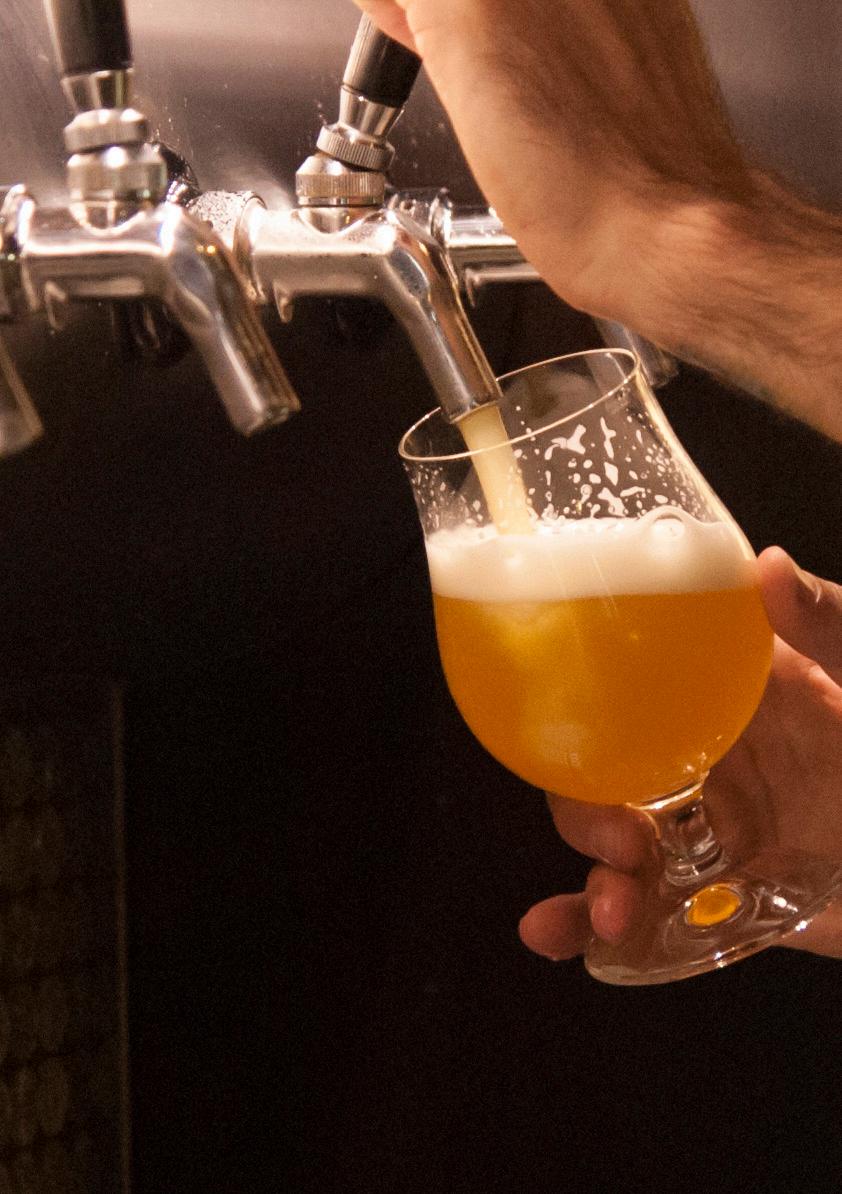
4 minute read
Technical focus Brewlab’s Dr Keith Thomas offers advice on effective tasting techniques
Where does tasting stop and drinking start? As brewers we will be experienced in both. However, this is an important consideration as the two provide different impressions of your beer and can have different consequences in your quality appraisals. Naturally, tasting continues during drinking although our response may alter due to the effect of alcohol and of the conviviality of the drinking environment. The impression of a beer in a tasting cubicle will differ greatly from that of a beer in a bar. As most of our beers are drunk in bars it is valid to ask how relevant to customers are our finely tuned tastings from the laboratory (or perhaps brewery office)? And, in this context, how can drinking response be correlated to tasting? When we train tasters, we focus on sampling small quantities being highly conscious of the impact of one beer on another, on the effect of volume saturation and the need to maximise sensitivity. Through this, specific flavours can be identified and quantified, profiles generated, and faults noted. Information is obtained as to how a brew meets targets and, if necessary, it can be rejected for sale due to being out of specification. Ideally the brew team appraise the details and discuss corrective action if necessary – or retire after the brew shift for a congratulatory pint to affirm success. Information is also passed to the marketing team who apply creative talent to draft supporting and promoting material – then also retire to join the congratulations. Such circumstances also allow the marketing team to assess the effect of volume intake – and ask the question noted above - whether the fine flavour profile generated in the laboratory matches the purchase of pints and their acceptability to drinkers? Unsurprisingly this isn’t guaranteed. A beer which tastes outstanding in the brewery may be very different at the end of a pint, or even half-way down. In which case how can a tasting programme be constructed to identify this in advance without requiring brew staff to drink unreasonable, and unsafe volumes at work? A quick clarification. Although this will overlap with drinkability there are some important differences. Drinkability is perhaps considered as the ease of moving from one drink to another of the same drink. Acceptability is the ease of drinking and enjoying the purchased volume. In effect will the pint be enjoyed throughout its intake and not rejected. Reasons for rejection centre to some extent on the effect of beer chemistry on physiology whereby certain flavours have a cumulative impact on the sensory response. We are not considering flavours which would cause initial rejection here – sourness, medicinal or fetid flavours for example. These would be identified before release and not appear in trade.

Bitterness, sweetness and astringency are particularly prevalent as having accumulating impact with viscosity a contributing element. To some extent it is necessary to factor in an element of personal sensitivity as we all differ in our inherent ability to detect specific flavours and in our conditioning through experience. The accumulation of a particular flavour on taste receptors may well lead to a change in response from acceptance to rejection. Bitterness and astringency are two beer flavours recognised as causing early termination of a pint and have clear control points in recipes and processing. They will also relate to viscosity as residual dextins may mitigate their impact to some extent. A beer which is acceptable at a particular final gravity may taste different and less palatable in the finish if attenuation is overextended. Returning to the monitoring process – how can palatability and acceptability be monitored short of engaging a panel of drinkers alongside your panel of tasters – or in effect running an open bar? Past brewing lore included a three pint test where brewers would assess a beer’s quality after three pints in a convivial environment, possibly the pub after work but also a few bottles at home. It would be difficult to incorporate this into an employment contract today but offering free or subsidised take home samples are one option followed by a response discussion at a taste panel session. In-trade questionnaires such as at meet the brewer events are an alternative and of particular value in that they cover general drinkers and so are more representative. Finally monitoring throughput in selected outlets with a stable clientele can provide recordable data and also allow time profiles of purchase after a beer has been installed. Finally, a brief word to pick up on drinkability, the follow on from one pint to another. Drinkability is arguably a target of any beverage sales strategy but can lead to negating of prominent flavours as lighter, less bitter and less malty beers are often preferred in general drinking. Excessive drinkability has the potential to lead to the minefield of overconsumption. Palatability and acceptance are the target to ensure that a pint is satisfying and a good compliment to the hard work and restraint of your tasting panel.










